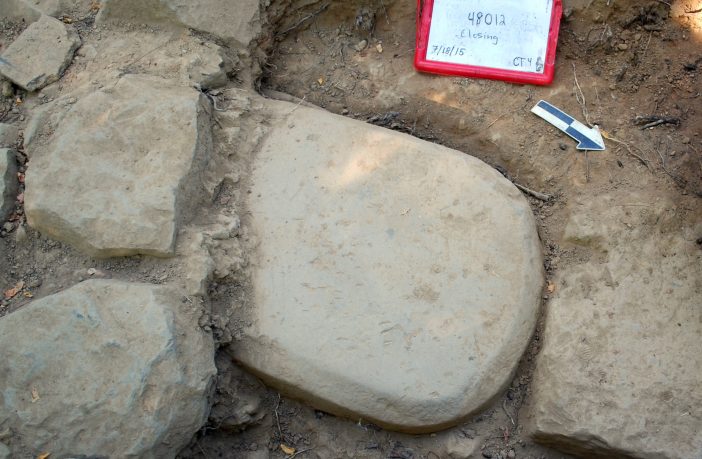A team of archaeologists has recently discovered a 2,500 year old stone on which is an inscription in an ancient, extinct language. We spoke to one of the academics leading on the project, Professor of Archaeology, Phil Perkins, about the impact of this on our understanding of the past:
What is the ‘Etruscan Stele’?
“Basically, it is a big stone with writing on it in the extinct Etruscan language. It was discovered in the Mugello Valley, Italy on an excavation project established by colleagues from universities in Switzerland, the USA and the UK.
“The earliest Etruscan inscriptions can be dated to about 700 BCE. The language has always been intriguing; it’s widely considered to be unintelligible. Whereas the characters are related to the Greek alphabet, it is unlike any other European languages. It actually became extinct in about 0 BCE, and we don’t have any surviving Etruscan literature to help us read the texts.”
What does the inscription mean?
“We don’t know what it actually says yet! It’s being studied in Florence at the moment and, being 2,500 years old, it’s in really poor condition.
“We’re also really challenged by long texts that might say something interesting as we haven’t developed a wide enough vocabulary to read long texts. What it actually says will be the topic of academic debate for many years.
“We are able to transliterate the inscriptions; we can say what letters are there. Then the argument and difficulty is in trying to translate the text into other languages in its entirety as that involves understanding nouns and verbs and the grammar of the language. The challenge with this latest discovery is that we have to figure out which words are known already and how we should interpret the other words. Hopefully, in the next couple of months, there will be a preliminary understanding of what is written on the stone.”
Is this the first example of Etruscan language to be discovered?
“There are about 15,000 texts known, most of which usually consist of two or three words; this inscription has approximately 120 individual letters so is the second longest inscription on stone ever discovered. There are longer texts on bronze tablets, and even one that was written on cloth, later used to wrap an Egyptian mummy.
“Most Etruscan inscriptions are discovered in tombs and just consist of the name of the individual in the tomb, and perhaps the names of their parents; this inscription was discovered on a sacred site, which suggests that it potentially contains information other than simply names; it’s really exciting.
“All that we can read at the moment are the names of the two most important divinities, Uni and Tinia, the Etruscan equivalents of Roman Juno and Jupiter, and this just adds to its importance.”
What impact will translating the inscription have on our understanding of Etruscan culture?
“The Etruscans were actually the first culture in ancient Italy to build temples with columns and decorated roofs, and much of what we know about the Etruscans comes from their temple buildings.
“From where it was discovered, we can quite confidently say that the Etruscan Stele contains a sacred text and may have provided instructions for the rituals and sacrifices that would have been appropriate at that temple. We are really lucky that it names the deities that the temple was dedicated to as the two most important Etruscan gods. We are hopeful that the inscription will help us to develop our knowledge of the sorts of rituals that went on at this Etruscan temple.”



